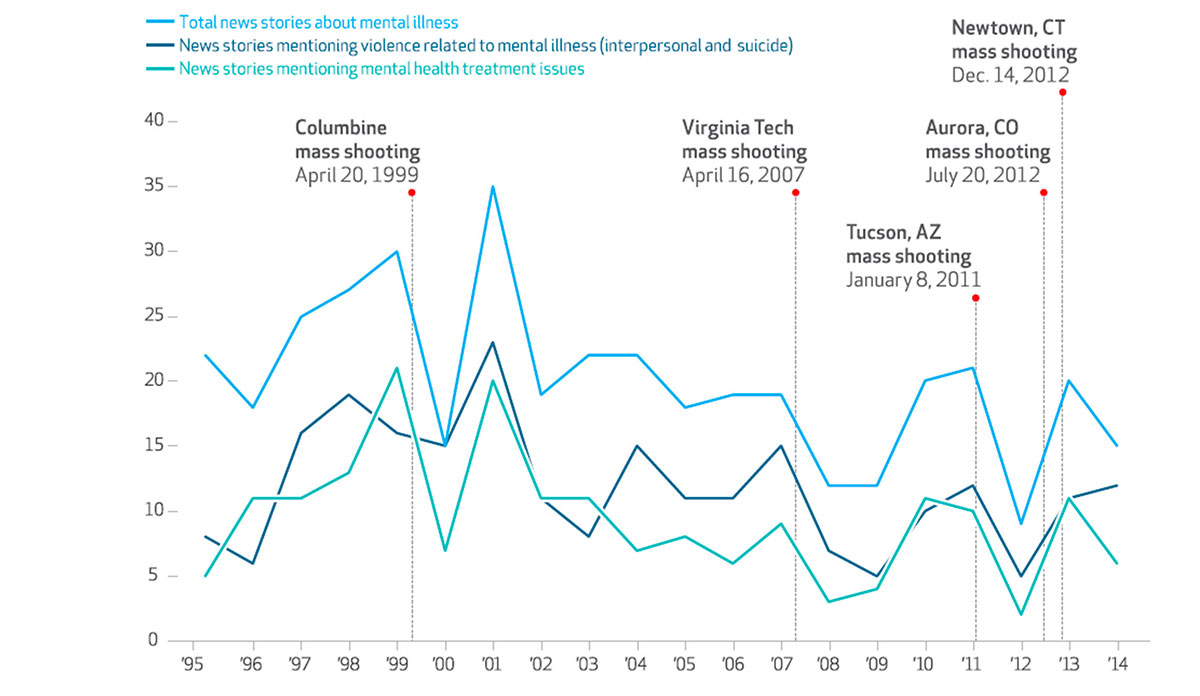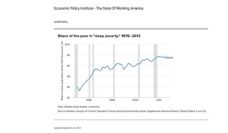Recently, Dan Diamond spoke to Public Health Post and highlighted the role that journalists play in shaping conversations about policy. A study from Dr. Emma E. McGinty and a team of colleagues at Johns Hopkins University suggests that when it comes to mental health, news coverage in the last twenty years may have led that conversation in a misguided and discriminatory direction.
The research team analyzed headlines from a random national sample of 400 news stories from 1995-2014, both in print and on television. They drew from popular sources like the New York Times, Washington Post, ABC, and all CNN news programs.
Their study was the latest to illustrate an overrepresentation of violence in coverage of mental illness. Fifty-five percent of the stories they surveyed about mental health mentioned violent episodes , as compared to 47% that discussed treatment—of which, access (26%), funding (19%), and quality (16%) were the most frequent focus. Fourteen percent of stories mentioned successful treatment or recovery.
Schizophrenia, depression, bipolar disorder, PTSD, and other psychotic symptoms were the most frequent diagnoses of those mentioned in the context of interpersonal violence. Substance use, stress, and abuse or trauma were the most frequently mentioned risk factors for violence. Criminal justice involvement was the most commonly mentioned consequence of mental illness, followed by stigma or discrimination.
…the connection between violence and mental illness is more complex than is often portrayed or perceived.
Commonly found statements about mental illness were “mental illness increases the risk of interpersonal violence,” “most people with mental illnesses are not violent toward others,” and “it is difficult to predict interpersonal violence in people with mental illnesses.” When broken up into two decades, the frequency of these statements did not change.
Other studies have found that the connection between violence and mental illness is more complex than is often portrayed or perceived . For example, those with mental illness are much more likely than the general population – 65 to 130% more – to be victimized than they are to victimize others. Gun-related deaths in the U.S. are also significantly more likely to be associated with suicide than with acts of interpersonal violence like homicides or mass shootings. And individuals with comorbid conditions of mental illness and substance abuse are dramatically more likely to have a lifetime incidence of violence than those with mental illness alone due to symptoms of intoxication or withdrawal.
The media’s influence is profoundly illustrated by public perception research. Violent portrayals of mental illness are associated with higher levels of social stigma surrounding people with psychological disorders and lower levels of support for beneficial mental health policies and funding.
Databyte via Emma McGinty, Howard Goldman, Bernice Pescosolido, and Colleen Barry, “Portraying Mental Illness and Drug Addiction as Treatable Health Conditions: Effects of a Randomized Experiment on Stigma and Discrimination.”













